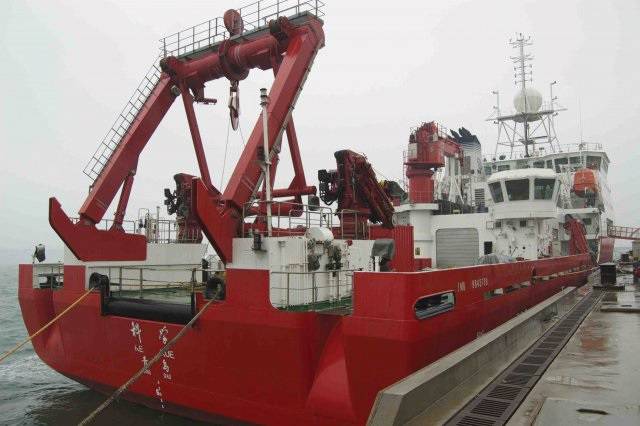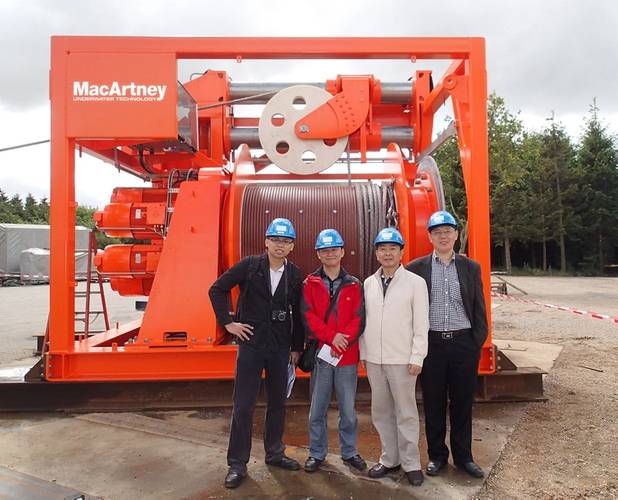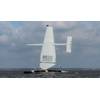MacArtney Winch for Chinese Research Vessel
MacArtney delivered a MERMAC R40 RA winch to the Hunan University of Science and Technology, Xiangtan, China. The order was realized in close cooperation with SeaTech China in its role as exclusive MacArtney product and system representative on the Chinese market for underwater technology. The winch was procured with support from the 863 state high tech research and development plan and will be installed onboard the RV Ke Xue which is regarded as the most advanced multi-purpose research vessel in China.
MacArtney is among the pioneers within electric winch innovation and was the first company to successfully develop and field an electric marine winch featuring Active Heave Compensation (AHC). The supplied MERMAC R40 RA winch is among the first electric driven winch systems with AHC to enter service in China.
In essence, the purpose of AHC is to keep a load, held by a vessel, motionless with regards to seabed, independent of the wave motion, hereby allowing operators to sustain subsea equipment operation, even during adverse weather conditions and higher sea states. AHC is enabled by using the data from a motion reference unit to detect vessel displacement (heave, pitch and roll). A control unit on the winch system then calculates and executes the actions necessary for the winch system to respond to- and compensate for the movement.
Onboard the Ke Xue, the AHC functionality will be put to good use, as the main application of the winch will be to support the accurate ocean floor deployment, handling and recovery of a large scale (60 metre) benthic drill rig for collecting sub-bottom core samples.
The RV Ke Xue (Chinese for science), was delivered in 2012 and is operated by the Institute of Oceanology under the Chinese Academy of Sciences (IOCAS). Featuring world-class equipment and technology, including a large laboratory, an advanced ROV system, a deep-towed vehicle, rock drill and deep-sea exploration and sampling gear, the vessel represents the cream of the crop of Chinese oceanographic research capabilities and is considered to be among the most sophisticated research ships in the world. The Ke Xue is designed to conduct a wide range of tasks including water body detection, atmospheric exploration, deep-sea environment exploration and remote sensing information verification.
Weighing in at 4,711 tons, the vessel is 99.8 meters long and 17.8 meters wide and with a cruising capacity of 15,000 nautical miles and a top speed of 15 knots, the Ke Xue can travel with 80 crew members and scientists for 60 days. This way, the Ke Xue is capable of global voyages and all-day observations while functioning as a fully-fledged seaborne laboratory. The vessel is expected to serve as one of the key platforms for Chinese oceanographic studies for the next 10 to 20 years.




















 February 2024
February 2024



